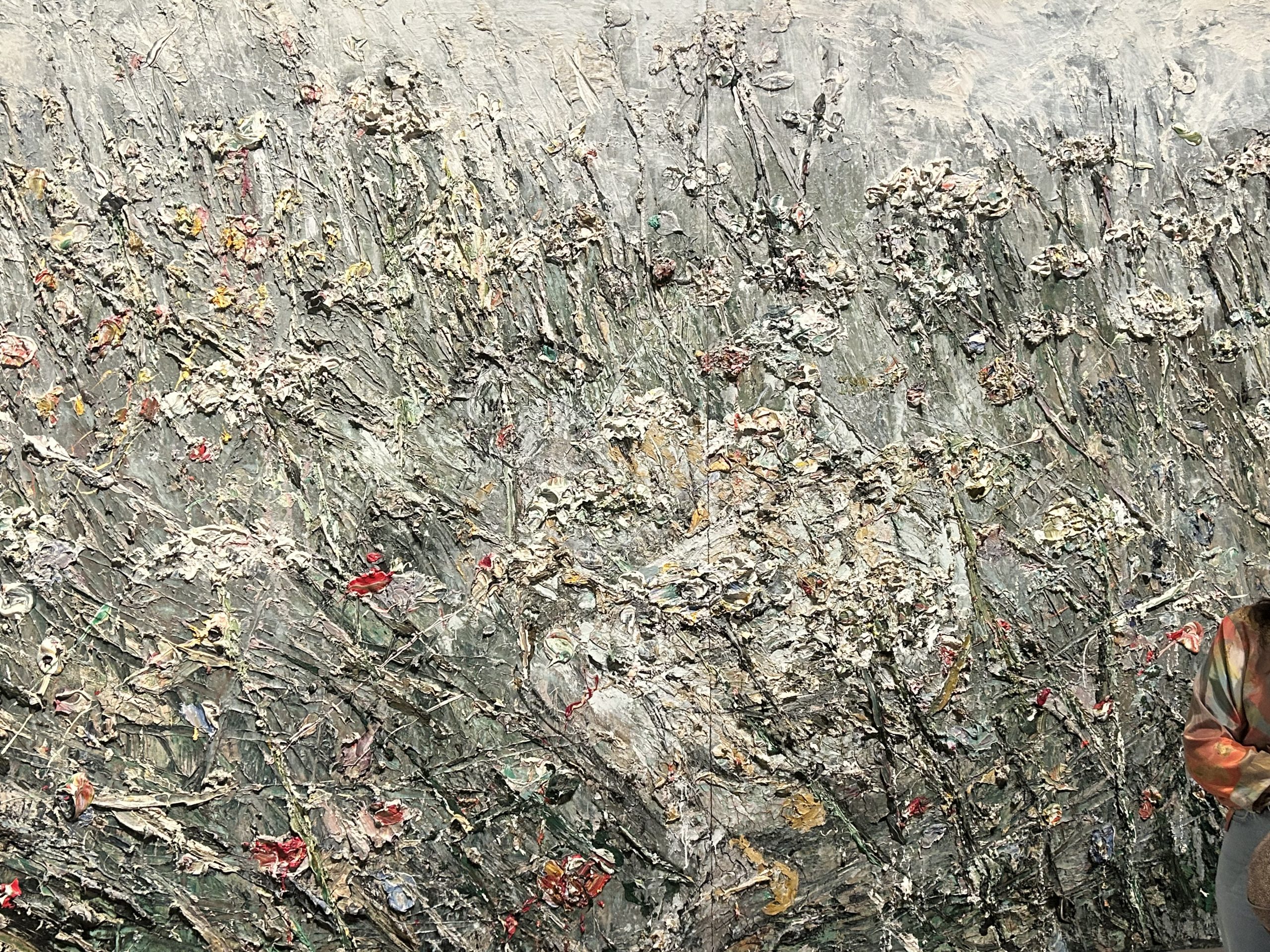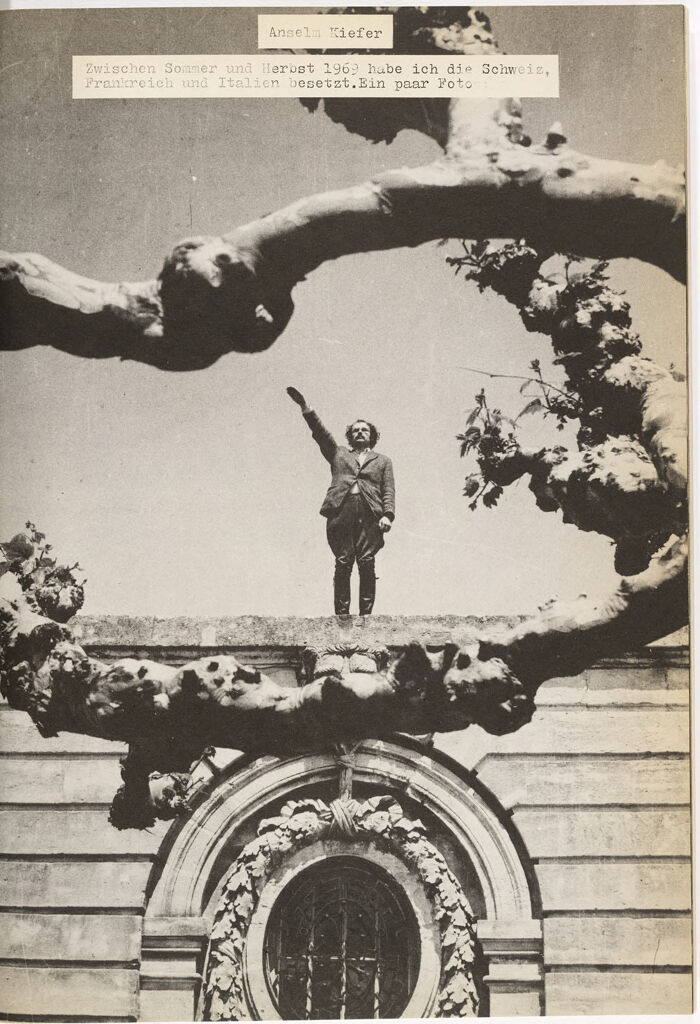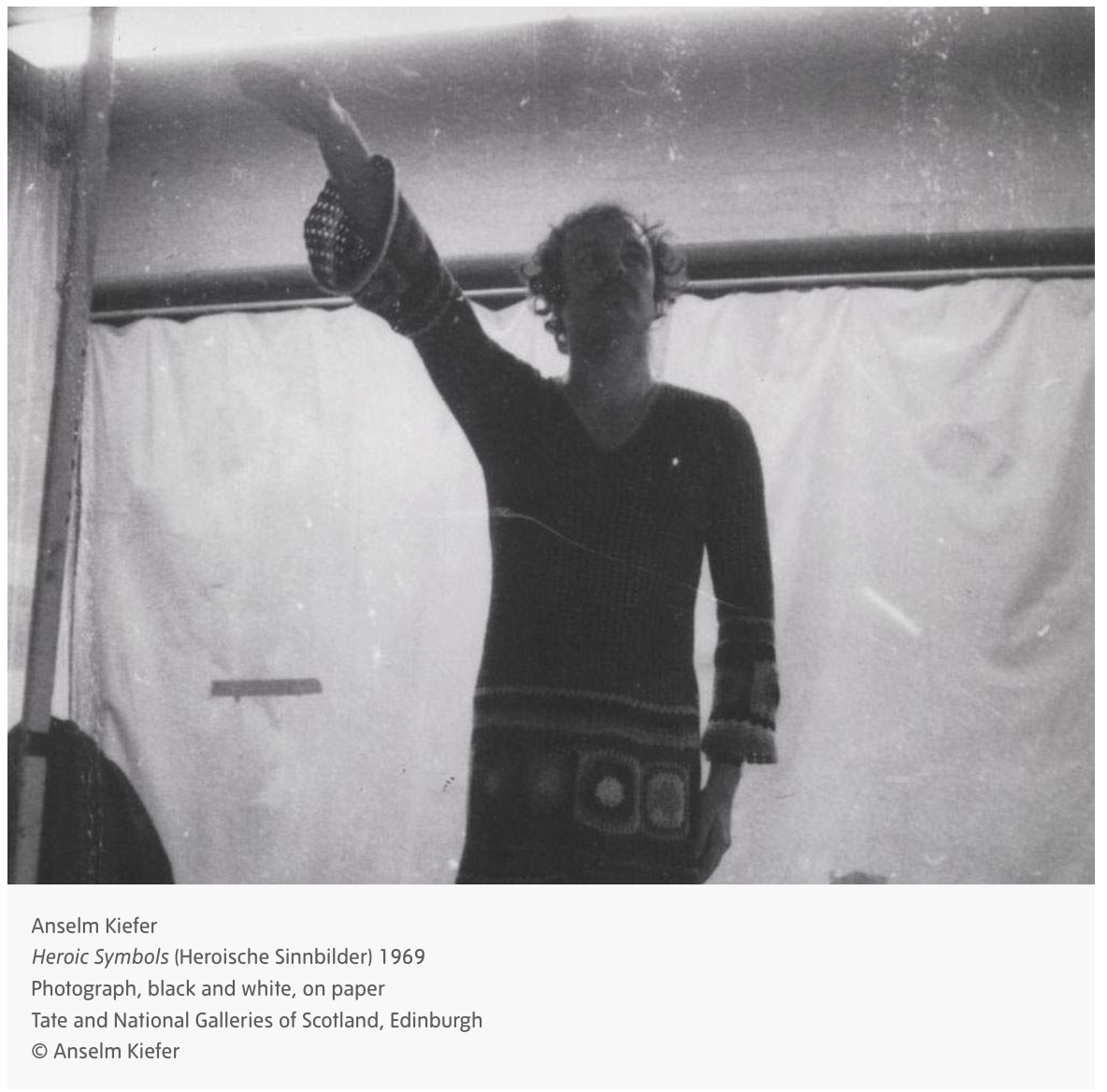Kiefer said Germany needs to live with its Nazi past, rather than bury and deny it
Anselm Kiefer was profoundly critical of post-1945 Germany’s prevailing attitude of “cultural amnesia” towards its Nazi past. He believed that a collective silence and a desire to forget were dangerous and ultimately unsustainable for the nation’s identity and future.
Born in 1945, Kiefer belonged to the Nachgeborenen—the generation “born after”—who grew up in the shadow of a history that was seldom discussed. He felt a deep-seated need to confront this suppressed past and to understand how the culture that produced great philosophers and poets could also be responsible for the horrors of the Holocaust.
Kiefer’s artistic practice became his method of “,” a German term that means “coming to terms with the past.” He famously and controversially began this process with his 1969 photographic series “Occupations” (Besetzungen), in which he depicted himself performing the Nazi salute in various locations across Europe. This act was a direct and provocative challenge to the post-war taboo on displaying Nazi symbols, intended to shock the German public out of its complacency and force a dialogue about its recent history.
Through his monumental and often somber paintings and sculptures, Kiefer continued to explore the intertwined and often corrupted nature of German mythology, history, and national identity. He incorporated materials like straw, ash, and lead to evoke a sense of decay, destruction, and the weight of history. His work consistently grappled with the question of how to be a German artist in the wake of the Third Reich.
While his work was met with significant controversy and resistance within Germany for what some saw as an inappropriate use of Nazi iconography, Kiefer was adamant that the past could not and should not be buried. He believed that only by confronting and integrating this dark chapter of its history could Germany truly move forward.
Kiefer was and is a massive fan of Van Gough
Influence of Van Gogh:
- Anselm Kiefer has had a lifelong fascination with Vincent van Gogh, which began when he was a teenager. He even traveled to the places where Van Gogh lived and worked, sketching and keeping a diary of his journey.
- In 2025 the Royal Academy of Arts put on an exhibition highlighting The exhibition highlights the profound and enduring influence of Van Gogh on Kiefer’s work, exploring shared themes, subjects, and artistic approaches.
Artistic Style and Themes:
- Kiefer’s work is characterized by its monumental scale and use of unconventional materials, such as straw, ash, clay, lead, and gold leaf.
- His paintings are often described as dark, somber, and melancholic, exploring themes of history, memory, trauma, and German identity, particularly the legacy of Nazism.
- In contrast to Van Gogh’s vibrant and life-affirming art, Kiefer’s work is often seen as an exploration of death, decay, and the darker aspects of the human condition.
The “Kiefer/Van Gogh” Exhibition:
- The exhibition juxtaposes Kiefer’s large-scale, dramatic works with Van Gogh’s smaller, more intimate paintings and drawings.
- This pairing has elicited mixed reactions from critics. Some find it to be a powerful and insightful dialogue between two great artists, while others view it as a jarring and mismatched comparison.
- Specific works by Kiefer in the exhibition include his reinterpretations of Van Gogh’s famous “Sunflowers” and “The Starry Night,” where he transforms the original’s vibrant energy into something more desolate and apocalyptic. He also incorporates literary and mythological references into his work, such as the poetry of Paul Celan and the myth of Eros and Thanatos.
Key Characteristics of Kiefer’s Work in the Exhibition:
- Scale and Materiality: Kiefer’s works are immense and textured, often appearing more like sculptures than paintings. His use of natural and industrial materials adds to their raw and visceral power.
- Dialogue with History: Kiefer’s art is deeply engaged with history and memory. He uses landscape as a way to explore the scars of the past and the complexities of German identity.
- A “Wagnerian” Artist: Some critics describe Kiefer as a “Wagnerian” artist due to the epic scale and ambition of his work, which can be seen as either profound or pretentious.
In essence, the discussions around Kiefer in the context of this exhibition highlight him as a powerful and challenging artist who engages in a deep and complex dialogue with the art of the past, particularly that of Van Gogh, to explore profound themes of life, death, history, and memory.


